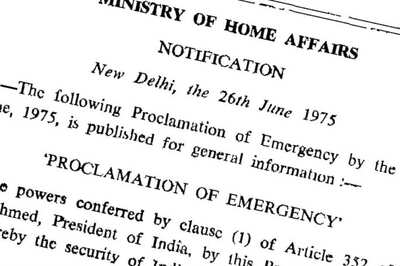
views
Perceptions of a new and emerging India have been given credence by the success of Indian businesses on the global stage and rising Indian investments abroad. Successful takeover of global brands by India Inc. have often been cited to predict that the country would become a dominant power in the 21st century.
Indian activities in the arena of mergers and acquisitions have indeed increased manifold over the last one decade. According to India Brand Equity Foundation, the trust run by the Union ministry of commerce and Confederation of Indian Industry (CII), outward investment to the tune of $80 billion has been made between 2000 and 2010; the UK and the US have emerged as the favoured destinations.
A CII survey report of the shows that Indian companies actually helped save and create thousands of jobs in the US through acquisitions of local firms there. It says that since 2005, nearly 65 per cent of the Indian companies operating in the US have added jobs to their operations; more than 80 per cent of the hiring was local.
Investments by domestic companies in overseas joint ventures (JVs) and wholly-owned subsidiaries stood at $10.3 billion during 2009-10, according to data from the Reserve Bank of India. In terms of destinations, Singapore, Mauritius, the Netherlands, the US and the British Virgin Islands accounted for 67 per cent of the total outward foreign direct investment (FDI). Singapore and Mauritius were the top destinations with more than 48 per cent share of the investments during 2009-10. Ibnlive brings to its readers some of the most significant mergers and acquisitions by India Inc. TATA GROUP
In February, 2000, The Tetley Group, the world’s second largest producer and distributor of tea, was purchased by India's Tata Group for £271million.
In 2004, Tata Motors acquired Daewoo's truck manufacturing unit in South Korea.
In 2005, Tata Motors acquired 21 per cent of Aragonese Hispano Carrocera giving it controlling rights of the company.
In January, 2007, Tata Steel purchased a 100 per cent stake in the Corus Group at 608 pence per share in an all cash deal, cumulatively valued at $12.04 billion, fending off a serious challenge from CSN, the Brazilian steel maker. The deal marked the largest Indian takeover of a foreign company and made Tata Steel the world's fifth-largest steel group.
In June 2008, Tata Motors acquired British Jaguar Land Rover (JLR), which includes the Daimler and Lanchester brand names from Ford for $2.3 billion.
In April, 2011, Tata Chemicals acquired a 25.1 per cent stake in an ammonia-urea fertiliser complex in Gabon for $290 million in which Singapore-based agro-product processor and supplier Olam International owns a 63 per cent stake and the Republic of Gabon holds 12 per cent. The company acquired the stake as a strategic investor and is likely to invest another $170 million in the second phase of expansion of the fertiliser complex.ADITYA BIRLA GROUP
In February, 2007, the Aditya Birla Group’s Hindalco entered into an agreement to acquire Canadian company Novelis for $6 billion, making the combined entity the world's largest rolled-aluminium producer.
The Group also owns copper mines in the Great Sandy Desert, Western Australia and the Mt Isa Block in Queensland.UB GROUP
United Spirits Ltd (USL), the flagship of the UB group and the world’s third largest spirits producer, purchased the Scottish distiller Whyte and Mackay in May 2007 for £595 million. This included brands like The Dalmore, Isle of Jura, Glayva, Fettercairn, Vladivar Vodka and Whyte & Mackay Scotch.
In 2006, Asian Opportunities and Investments Limited, UB's wholly owned subsidiary in Mauritius, announced the acquisition of French wine maker Bouvet Ladubay for €14.75 million.BHARTI GROUP
The $10.7 billion acquisition of Zain's African business by Bharti Airtel in 2010 was the second largest ever involving an Indian company.ONGC
In January 2009, ONGC Videsh Limited (OVL) completed the acquisition of Imperial Energy Corporation Plc, a UK-based company having exploration and production assets in Tomsk region of Western Siberia, Russia, with an investment of over $2.1billion.SUZLON ENERGY
In March, 2006, Hansen Transmissions, the Belgian gearbox maker for wind turbines, was acquired by the Tulsi Tanti-led wind turbine major, Suzlon Energy, through its subsidiary, AE-Rotor Holding BV, for € 465 million in cash.
In May, 2007, a series of protracted bidding resulted in Suzlon Energy acquiring the majority shareholding in Repower, the German wind turbine manufacturer, for €1.3 billion. Suzlon subsequently strengthened its position by buying another 30 per cent stake in June, 2008, for more than €350 million. In 2009, Suzlon raised its share to 92 per cent of Repower.MAHINDRA & MAHINDRA
In January, 2007, Mahindra and Mahindra Limited, through its Mauritius-based subsidiary Mahindra Forgings Global Limited, has acquired a 90.47% stake in Schoneweiss & Co. GmbH., a leading company in the forgings sector in Germany and valued at €90 million then. The value of the deal was not disclosed Meanwhile, foreign companies were also busy in snapping up a Indian companies as and when they smelt opportunities. Here are a few most notable ones.VODAFONE
In 2007, Vodafone Group bought out the 33 per cent stake of Essar Group for $5 billion in Hutchison Essar. Earlier on February 11, 2007, Vodafone had agreed to acquire the controlling interest of 67 per cent held by Li Ka Shing Holdings in Hutchison-Essar for $11.1 billion.DAIICHI-SANKYO
In June, 2008, Daiichi-Sankyo acquired a 34.8 per cent stake in Ranbaxy for $2.4 billion. In November, 2008, the Japanese drugs major completed the takeover in a deal worth $4.6 billion by acquiring a 63.92 per cent stake in Ranbaxy.HOLCIM
A 67 per cent stake in Ambuja Cement India Limited was acquired by Holcim, the Swiss-based cement and construction materials giant, for $634.9 million.IBM
The 2004 deal involving the acquisition of BPO service provider Daksh e-Services by technology behemoth IBM was valued between $130 million and $170 million.
Mergers and acquisitions have become the accepted way to grow business in today’s world. It is less time-consuming than greenfield projects and the higher cost is compensated by technology transfer and instant market access. (The writer is Editor, Special Editions, at Network 18)




















Comments
0 comment